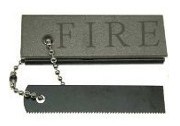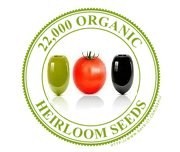Preserving fresh garden vegetables through home canning is a cost-effective way to have great tasting, nutritious food at your fingertips year around. If it grows, cultivated or wild, it can be preserved through canning and eaten later. With basic canning knowledge and a few favorite recipes, anyone can be successful at home canning.
Start Clean
No dirt or debris allowed, not even the tiniest particle or it could ruin an entire batch of home canned food. Sterilize all utensils in a boiling water bath: glass jars, lids, rings, funnels, ladles and any other utensil you’ll be using needs to be sterilized in boiling water for five minutes. Remove items from boiling water with sterilized tongs and place on clean, white towel to dry and cool. Cut out any bad spots in vegetables, wash vegetables thoroughly and set aside.
Vegetable Preparation
There are two types of vegetable preparation methods: cold pack and hot pack. Each type has it’s advantages and disadvantages, and simply comes down to which vegetable prep method you prefer.
In the cold pack method, vegetables are peeled, cut, etc. and placed inside the canning jars in their raw form and cooked during a long canning process. The hot pack method involves preparing and cooking the vegetables, then packing them hot (into hot jars) and processing them in the canner for a shorter amount of time, and in some cases, not at all.
The canning recipe you choose for a vegetable should give you all the preparation details along with canner processing time for both cold pack and hot pack.
Canning Method
Some hot packed vegetables require no further processing time for canning. The vegetables are prepared, cooked, placed into glass jars and lids are attached. The jars seal as the food cools.
Pressure canning and water bath canning are the other ways home canned vegetables are processed. Filled and lidded glass jars are placed in a large pressure cooker or large open pot (water bath canning) and brought to a boil for a prescribed amount of time.
Pop, Pop, Pop
After processing the filled jars, use clean tongs to remove jars from canner. Place jars on folded towel (jars are hot and towel will protect surface) with a air space between each jars. Handle the jars with caution and don’t bump them into anything. The jars are extremely hot and under pressure, a slight bump can cause a hot jar to explode.
A liquid inside the glass jars will continue to boil for about 30 minutes after the jars are removed from canner. As the vegetables and liquid begins to cool, the jars will begin to seal with a loud ‘pop’. This is the sound you want to hear, no pop, no seal.
Allow the jars to set undisturbed for 24 hours, then rub your finger over the lid top of each jar. You’re feeling for a slight indentation in the center of the lid, which assures you the jar has sealed and the vegetables are secure and safe to eat for up to one year.
If the lid gives and pops when you run your finger across the lid top, the jar has not sealed and the vegetables should be eaten immediately, they are not safe for storage.
Shane Matherson writes about nutrition, emergency survival and more at Boat Insurance.org.
Picture Credit From The Bitten Word on Flicker























